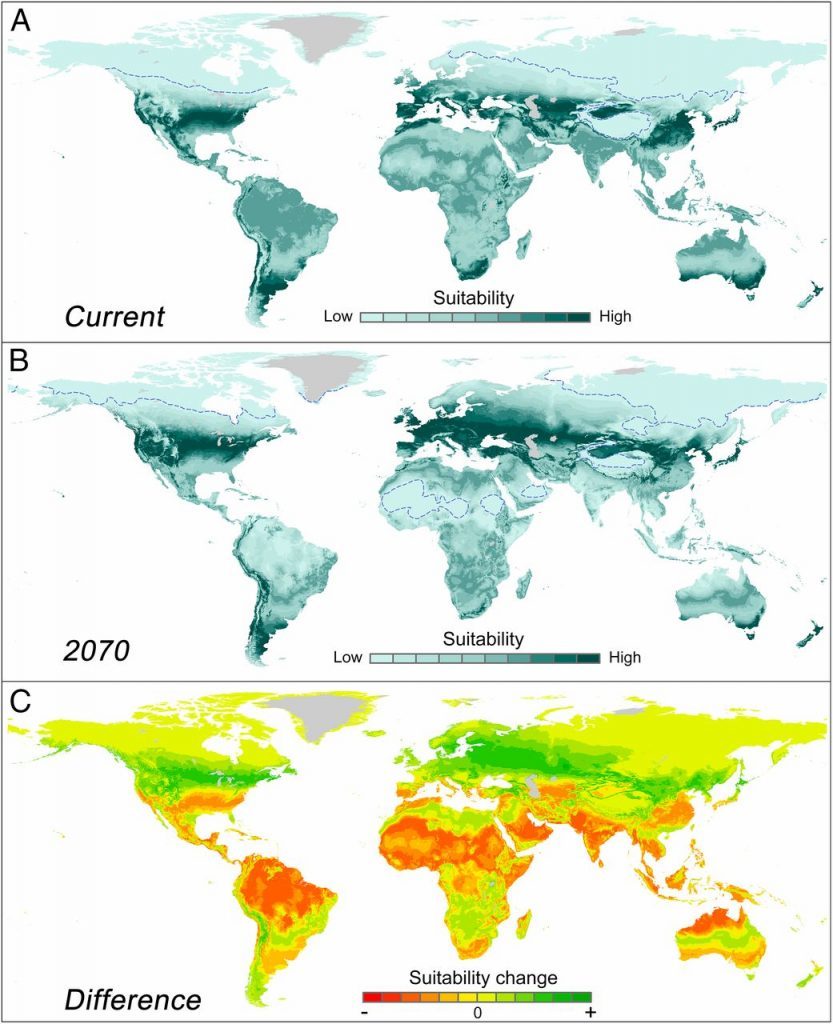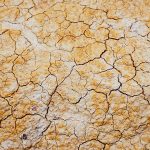The climate is changing, global temperatures are getting warmer, and extreme weather events are getting more frequent. As a consequence, areas inhabited by 1 to 3 billion people, which have served humanity well over the past 6,000 years, may become hard or impossible to live in the future. These are the alarming results of a study published in PNAS.
The Human “Ecological Niche”
By observing the distribution of world populations, the researchers behind the study observed that the development of human populations took place in ecosystems sharing certain characteristics.
In particular, human societies have all developed and established themselves in territories whose annual average temperature fluctuated between 11 and 15 degrees Celsius. Other constant and important factors were the availability of water resources, ecosystem stability, or agricultural productivity.
Due to their particular characteristics, these territories can be looked at as a kind of “ecological niches” that gather the necessary conditions for human societies to survive and thrive. However, by transforming the climate, global warming could disrupt this niche and transform it to the point that some of these territories become less habitable for humans.
Ecosystems Supporting Human Life Are Being Degraded
The explanation is relatively simple to understand: by transforming the temperature, global warming leads to numerous collateral reactions. Water availability is changing. Soil productivity decreases, and with it, agricultural yields. Ecosystems are no longer as stable as they used to be and, for instance, natural disasters are likely to multiply, along with biodiversity losses which affect local cultures and end up changing ecosystems at larger scale.
These phenomena are not happening everywhere – nor at the same pace, or with the same intensity – so the existence of human societies is not at stake. But in more fragile or more exposed places, this could ultimately be a health risk to those living there. And at the same time, the supplies (like food or raw materials) produced and exported from these regions can also be at risk.
In particular, certain ecosystems close to the tropics may no longer meet the ecological conditions desirable for the maintenance of efficient human societies. And unfortunately, this is the case of areas that are currently extremely populated: the Indian subcontinent, Southeast Asia, tropical South America…
The maps below, taken from the study, allow you to visualize the places where the changes will be most pronounced.

Are We Heading Towards Massive Populational Displacements?
The likely consequence of these ecosystem changes is that in areas where human life will become less and less easy, there will be massive populational movements.
We are already seeing it in certain regions of the Horn of Africa or India: when ecosystems change, populations, driven by hunger, the economic crisis or the exodus of farmers, move to other places where life seems to be better. And step by step, this creates conflicts of access to resources and migratory phenomena that are difficult to measure control.
In the best-case scenario, there will be 1 billion people who will be threatened by this type of transformation. But nearly 3.5 billion people, or almost a third of the population projected for the end of the century, can suffer from these migrational chances. One more reason making it clear how urgent it is to fight and mitigate the effects of global warming.
